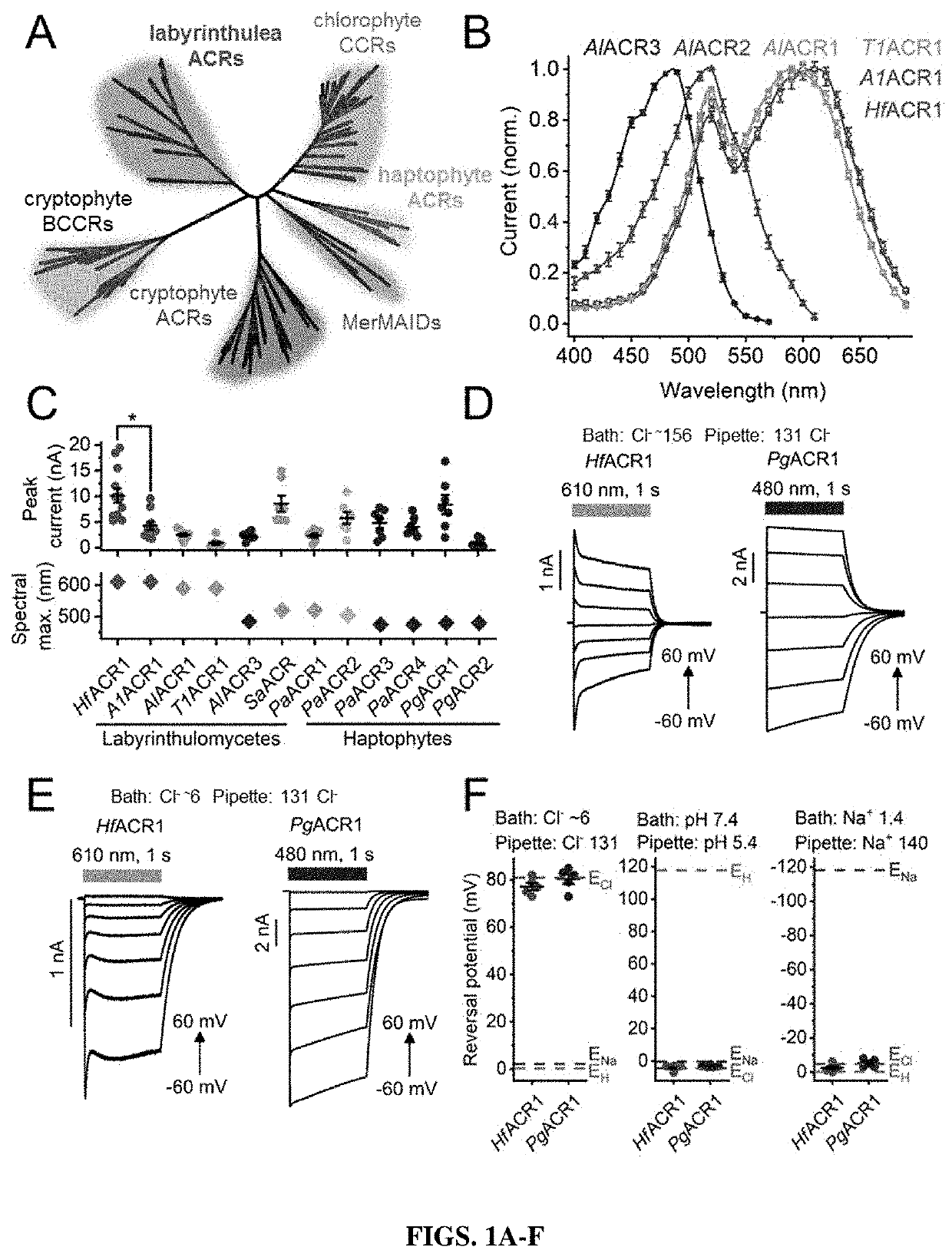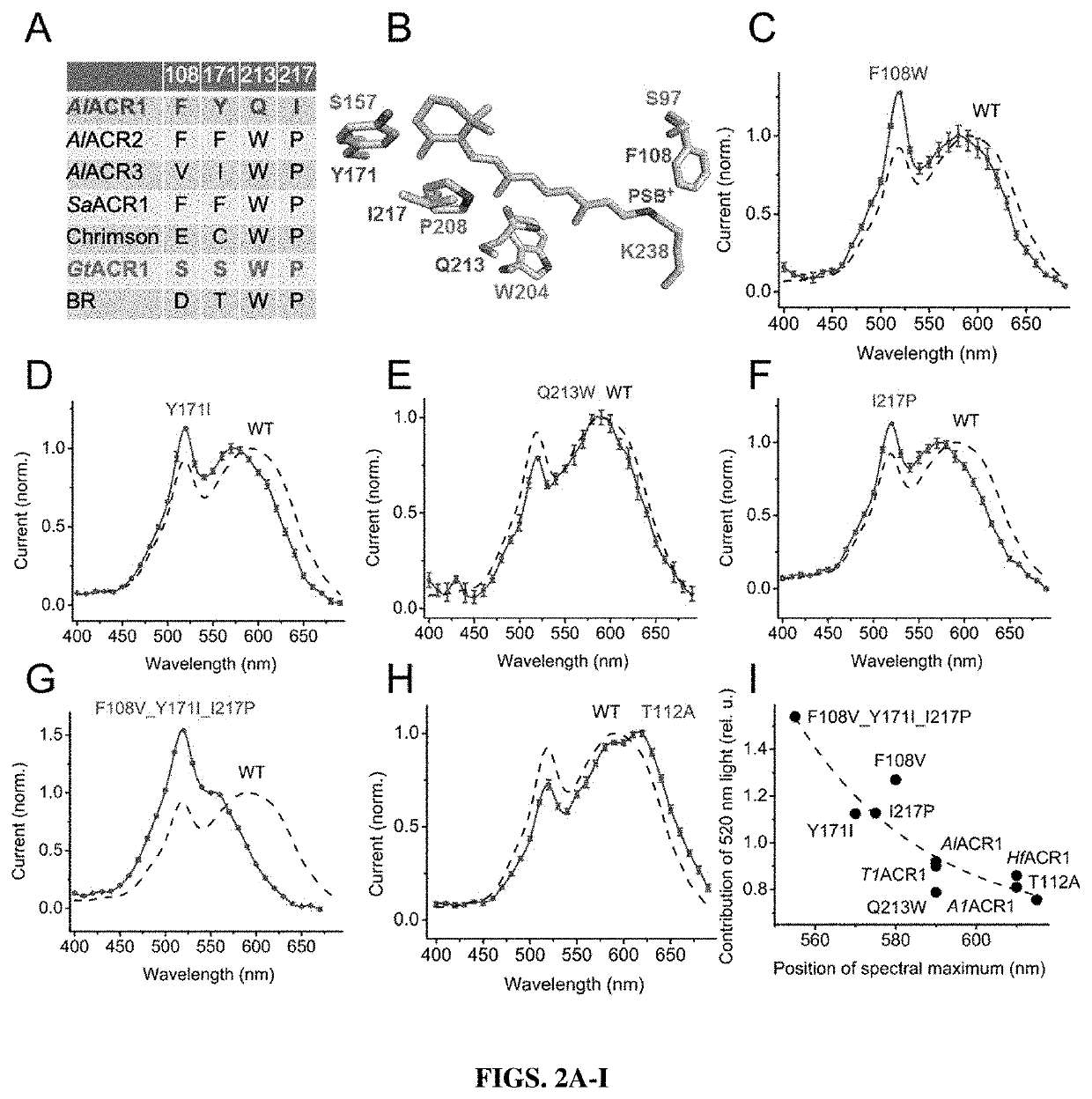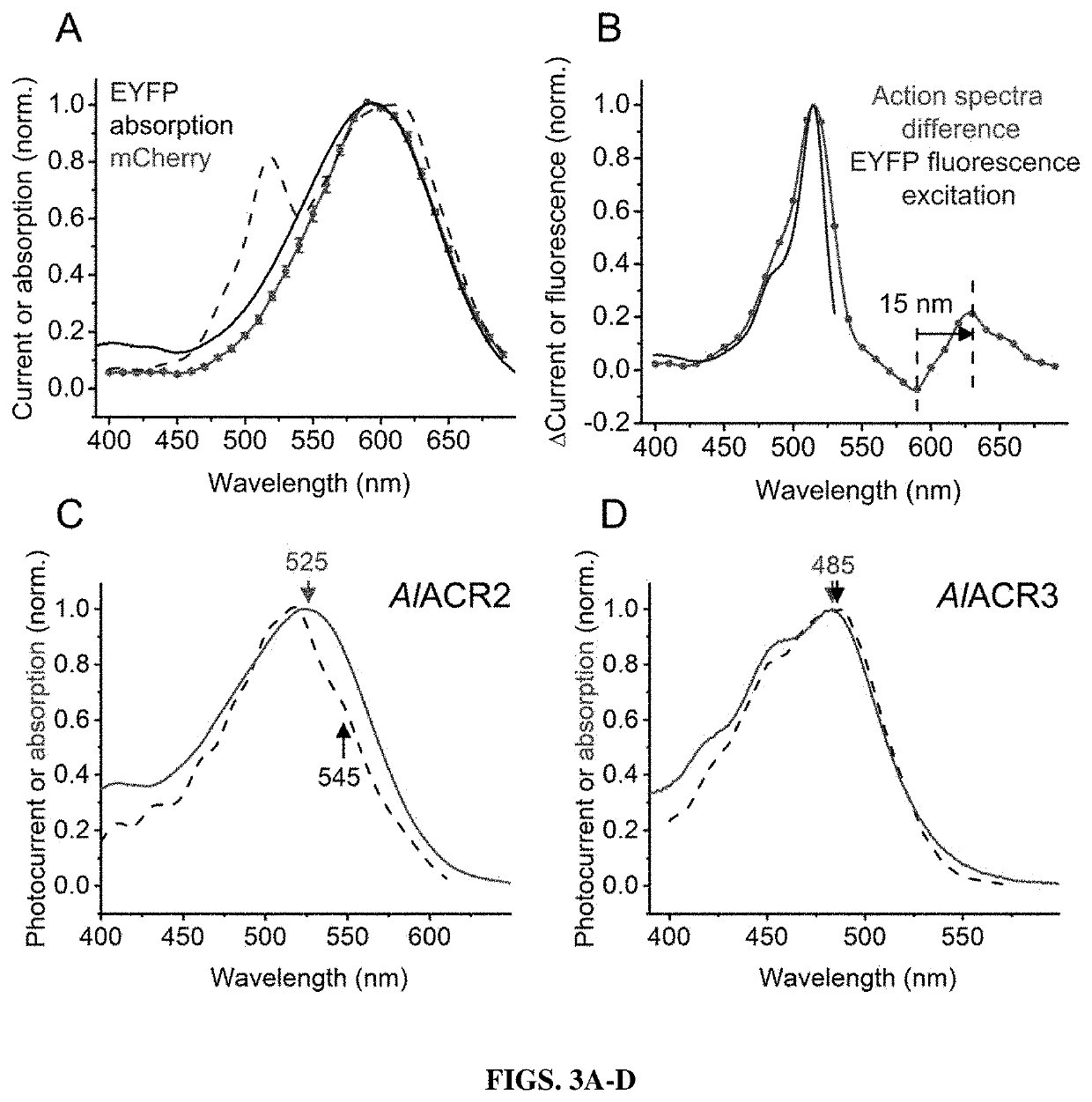Compositions and methods for use of red-shifted anion channel rhodopsins
a technology of anion channel and rhodopsin, which is applied in the field of molecular biology and medicine, can solve the problems of not having a natural acr with an absorption maximum and not being able to convert chrimson) to anion channel, and achieve the effect of maximum spectral sensitivity
- Summary
- Abstract
- Description
- Claims
- Application Information
AI Technical Summary
Benefits of technology
Problems solved by technology
Method used
Image
Examples
example 1
& Methods
[0194]Bioinformatics. A keyword search of gene annotations was used to identify rhodopsin genes at the genome portals of A. limacinum MYA-1381, P. antarctica CCMP1374 and P. globosa Pg-G of the US Department of Energy JGI. The three hits showing protein sequence homology to previously known algal channelrhodopsins found in the A. limacinum genome were then used for tblastn search of the JGI genome portal for Schizochytrium aggregatum ATCC 28209 and whole-genome shotgun contigs from stramenopiles at the NCBI portal.
[0195]Protein sequence alignments were created using MUSCLE algorithm implemented in DNASTAR Lasergene (Madison, Wis.) MegAlign Pro software. Phylogenetic trees were analyzed with W-IQ-TREE online tool (Trifinopoulos et al., 2016) using automatic model selection, 1000 ultrafast bootstrap replicates and visualized with iTOL 5.5.1 (Letunic and Bork, 2019). Homology models were obtained using the commonly used structure prediction servers I-TASSER (Yang et al., 2015)...
example 2
odopsin Sequences
[0201]Channelrhodopsin homologs were found in the genomes of twelve strains of labyrinthulea from the family Thraustochytriaceae. Most of the analyzed genomes (listed in Table 1) encode three paralogs. The exceptions are the genomes of Schizochytrium aggregatum ATCC 28209, in which only two paralogs were found, and of Aplanochytrium kerguelense PBS07, in which no homologs were found. The Aurantiochytrium sp. KH105 genome encodes three pairs of nearly identical paralogs that may have resulted from recent gene duplications in a single genome or from two different strains / species in a mixed culture. Some other sequences from different organisms were also completely or nearly identical to each other. The mean length of the encoded polypeptides was ˜660 residues. The seven transmembrane helical (rhodopsin) domain comprised ˜270 residues and was followed by a large cytoplasmic fragment, as in previously known algal channelrhodopsins. In the cytoplasmic fragments of some l...
example 3
of ACR Homologs by Patch Clamp Electrophysiology
[0205]Mammalian codon-adapted polynucleotides were synthesized encoding the rhodopsin domains (residues 1-270 or 1-300, see Methods) of seven channelrhodopsin homologs from various labyrinthulea species, six from Phaeocystis antarctica and three from P. globosa, fused to a C-terminal enhanced fluorescent yellow protein (EYFP) tag, and expressed in human embryonic kidney (HEK293) cells. As shown below, labyrinthulea and haptophyte homologs are strictly anion-selective, so they are referred to as “ACRs”. The expression construct sequences were deposited to GenBank (their accession numbers are listed in the second column in Tables 2 and 3).
[0206]All seven labyrinthulea and six haptophyte homologs generated photocurrents when probed with whole-cell patch clamping. First, their action spectra were determined by measuring the initial slope in the linear range of the stimulus intensity, as shown in FIG. 9A. The spectra of AlACR1, AlACR2 and A...
PUM
| Property | Measurement | Unit |
|---|---|---|
| Fraction | aaaaa | aaaaa |
| Fraction | aaaaa | aaaaa |
| Electrical conductor | aaaaa | aaaaa |
Abstract
Description
Claims
Application Information
 Login to View More
Login to View More - R&D
- Intellectual Property
- Life Sciences
- Materials
- Tech Scout
- Unparalleled Data Quality
- Higher Quality Content
- 60% Fewer Hallucinations
Browse by: Latest US Patents, China's latest patents, Technical Efficacy Thesaurus, Application Domain, Technology Topic, Popular Technical Reports.
© 2025 PatSnap. All rights reserved.Legal|Privacy policy|Modern Slavery Act Transparency Statement|Sitemap|About US| Contact US: help@patsnap.com



